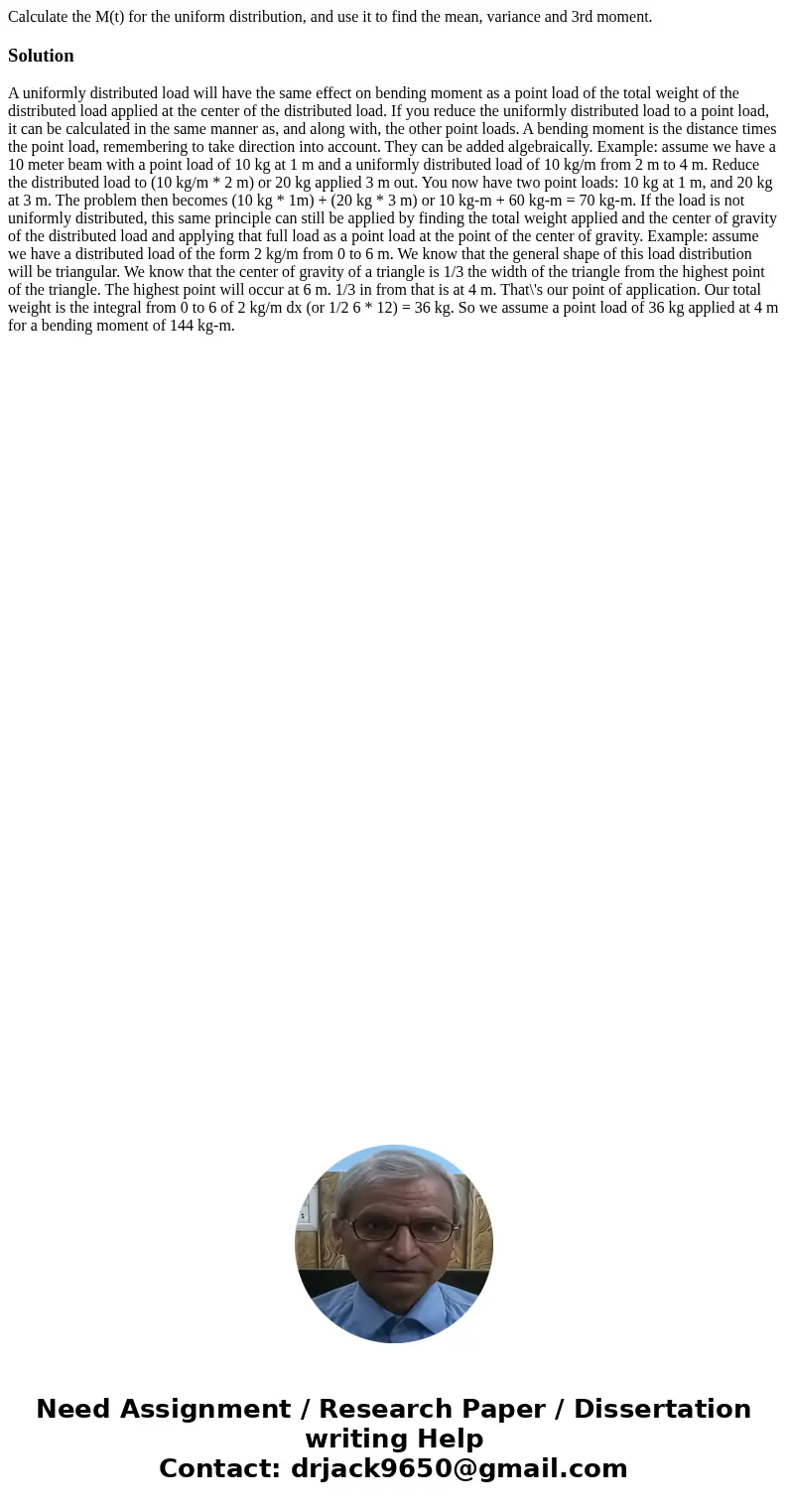Calculate the Mt for the uniform distribution and use it to
Calculate the M(t) for the uniform distribution, and use it to find the mean, variance and 3rd moment.
Solution
A uniformly distributed load will have the same effect on bending moment as a point load of the total weight of the distributed load applied at the center of the distributed load. If you reduce the uniformly distributed load to a point load, it can be calculated in the same manner as, and along with, the other point loads. A bending moment is the distance times the point load, remembering to take direction into account. They can be added algebraically. Example: assume we have a 10 meter beam with a point load of 10 kg at 1 m and a uniformly distributed load of 10 kg/m from 2 m to 4 m. Reduce the distributed load to (10 kg/m * 2 m) or 20 kg applied 3 m out. You now have two point loads: 10 kg at 1 m, and 20 kg at 3 m. The problem then becomes (10 kg * 1m) + (20 kg * 3 m) or 10 kg-m + 60 kg-m = 70 kg-m. If the load is not uniformly distributed, this same principle can still be applied by finding the total weight applied and the center of gravity of the distributed load and applying that full load as a point load at the point of the center of gravity. Example: assume we have a distributed load of the form 2 kg/m from 0 to 6 m. We know that the general shape of this load distribution will be triangular. We know that the center of gravity of a triangle is 1/3 the width of the triangle from the highest point of the triangle. The highest point will occur at 6 m. 1/3 in from that is at 4 m. That\'s our point of application. Our total weight is the integral from 0 to 6 of 2 kg/m dx (or 1/2 6 * 12) = 36 kg. So we assume a point load of 36 kg applied at 4 m for a bending moment of 144 kg-m.
 Homework Sourse
Homework Sourse